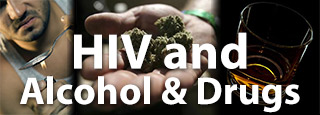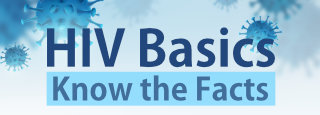






Undetectable = Untransmittable
Undetectable = Untransmittable
What is Undetectable?
Viral load tests measure the amount of RNA (the virus’ genetic material) in a sample of blood as the number of RNA copies per millilitre (copies/ml).
HIV treatment works by stopping the virus reproducing and suppresses the viral load to an undetectable level. Suppressing the virus maintains your immune system and keeps you healthy. In terms of preventing HIV transmission undetectable is defined as anything less than 200 copies/ml. When the viral load is <200 copies/ml there is a zero risk of HIV transmission to sexual partners.
HIV treatment works by stopping the virus reproducing and suppresses the viral load to an undetectable level. Suppressing the virus maintains your immune system and keeps you healthy. In terms of preventing HIV transmission undetectable is defined as anything less than 200 copies/ml. When the viral load is <200 copies/ml there is a zero risk of HIV transmission to sexual partners.
The time it takes to achieve an undetectable viral load varies between individuals but is usually within three to six months of starting treatment. Once the viral load is undetectable it is important that people are adherent – meaning they continue to take their treatment as prescribed – and have their viral load monitored regularly to ensure they remain healthy and undetectable.
It’s important to test regularly to identify as soon as possible whether you have acquired HIV. HIV treatment is fully funded in New Zealand for everyone and you should start treatment as soon as you are ready.
It’s important to test regularly to identify as soon as possible whether you have acquired HIV. HIV treatment is fully funded in New Zealand for everyone and you should start treatment as soon as you are ready.
Treatment makes HIV
Undetectable and Untransmittable
Undetectable and Untransmittable
People living with HIV who are on treatment and have an undetectable viral load (<200 copies/mL) cannot sexually transmit HIV

Frequently Asked Questions
FAQ
Can a person with HIV who has an undetectable viral load transmit HIV?
Can a person with HIV who has an undetectable viral load transmit HIV?
No. A person living with HIV on antiretroviral therapy (ART) with an undetectable HIV viral load in their blood for at least six months has a zero risk of transmitting HIV to a sexual partner.
What is an undetectable viral load?
What is an undetectable viral load?
Viral load refers to the amount of HIV in a blood sample of a person living with HIV. Generally, the higher the viral load, the more likely you are to transmit HIV. ART can reduce a person’s viral load to the point where it is so low that it cannot be detected by measurements. This is called ‘having an ‘undetectable viral load,’ which prevents the sexual transmission of HIV while simultaneously improving the health of a person living with HIV. Your Viral Load is considered undetectable when it is less that 200 copies/ml. It does not fully clear the virus from the body or cure someone of HIV. Excellence adherence, or taking ART as prescribed, is important to maintain an undetectable viral load.
What is the evidence?
What is the evidence?
The conclusion is based on the force of real world and research experience including PARTNER, HPTN 052, Opposites Attract, and the Swiss Statement. For instance, in the most recent study called PARTNER, there were ZERO transmissions out of 58,000 condomless sex acts between people with HIV with undetectable viral loads and their partners who are HIV negative. There have been no confirmed reports of anyone with an undetectable viral load sexually transmitting HIV in these studies.
Do viral “blips” increase the chance of transmission?
Do viral “blips” increase the chance of transmission?
Viral blips have not been shown to increase the transmission of HIV. Small transient increases in viral load (between 50 and 1000 copies) known as ‘blips’ sometimes result on effective ART when people are adherent, but typically return to undetectable levels without any change in treatment. Unless the viral blips start to increase in frequency, they do not mean treatment isn’t working and are normally not of concern to providers.
Does having an STI affect things?
How often should viral load testing be done?
How often should viral load testing be done?
Regular viral load testing for health benefits is normally recommended about 2-4 times a year for people who have a stable undetectable viral load. People with HIV who are using an undetectable viral load as an HIV prevention strategy should talk to their providers to see if increased viral load testing is recommended.
My latest lab report says <20, am I still undetectable?
My latest lab report says <20, am I still undetectable?
Yes, when ART suppresses a person's viral load to anything less than 200 copies/ml they are considered virally suppressed or Undetectable. The sensitivity of the viral load test is constantly improving, as such it is able to detect the virus in smaller and smaller amounts, but for the purpose of transmission risk, anything under 200 means you cannot transmit HIV to sexual partners. Being virally suppressed prevents the sexual transmission of HIV while simultaneously improving the health of a person living with HIV. Excellence adherence, or taking ART as prescribed, is important to maintain viral suppression.
What about pregnancy?
What about pregnancy?
Yes, you can have sex and conceive children with no risk of transmission between partners or to the baby.
The risk of a mother who has an undetectable viral load passing HIV on to their unborn baby is practically zero (0.1%) while engaged in antenatal care. U=U does not apply to breastfeeding.
The risk of a mother who has an undetectable viral load passing HIV on to their unborn baby is practically zero (0.1%) while engaged in antenatal care. U=U does not apply to breastfeeding.
If my partner is Undetectable, do I need to take PrEP?
If my partner is Undetectable, do I need to take PrEP?
Pre-Exposure Prophylaxis (PrEP) and Post-Exposure Prophylaxis (PEP) are not needed if an HIV negative individual has sex with someone who is HIV positive, is on treatment and has an undetectable viral load.
HIV negative individuals only need PEP or PrEP if they have condomless sex with somebody who does not know their HIV status or who is HIV positive but has a detectable viral load.
HIV negative individuals only need PEP or PrEP if they have condomless sex with somebody who does not know their HIV status or who is HIV positive but has a detectable viral load.
If I'm Undetectable, do I need to disclose my status to sexual partners?
If I'm Undetectable, do I need to disclose my status to sexual partners?
People living with HIV are entitled to an active, healthy sex life. You do not have to tell a sexual partner that you have HIV, as long as you take appropriate precautions to prevent sexually transmitting HIV.
In New Zealand, what is considered 'appropriate precautions' is using a condom for vaginal or anal sex. While adhering to treatment so you maintain an undetectable viral load offers more protection than condom use, undetectable has yet to be recognised under NZ law. You can find more information on disclosing your status to others here.
In New Zealand, what is considered 'appropriate precautions' is using a condom for vaginal or anal sex. While adhering to treatment so you maintain an undetectable viral load offers more protection than condom use, undetectable has yet to be recognised under NZ law. You can find more information on disclosing your status to others here.
What if I can't achieve an undetectable viral load?
What if I can't achieve an undetectable viral load?
It's important not to stigmatise or marginalise people who, for whatever reason, do not achieve an undetectable viral load. We must ensure we do everything we can to support them to do so while respecting their choices. This includes addressing social, psychological and stigma-related barriers to engagement in care and adherence to treatment.
Media Downloads
Media Downloads
A full range of campaign posters are freely available for download below to help spread the word that Undetectable = Uninfectious. Alternatively if you would like us to send your business or organisation a stock of printed A3 posters along with other information leaflets and booklets, you can order them here.



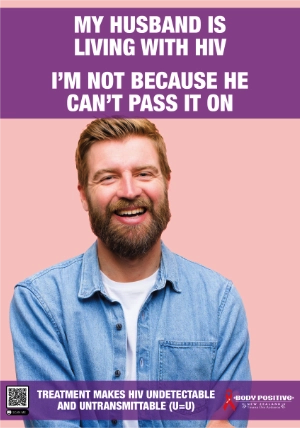
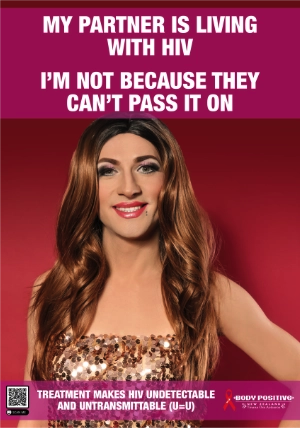
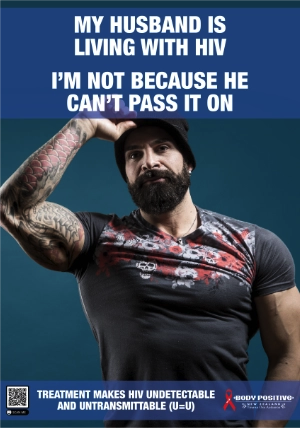
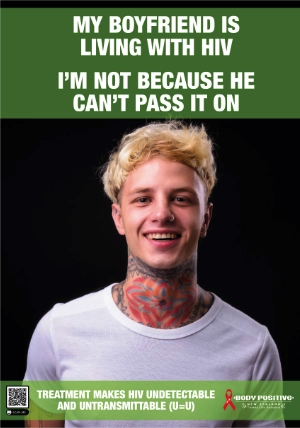

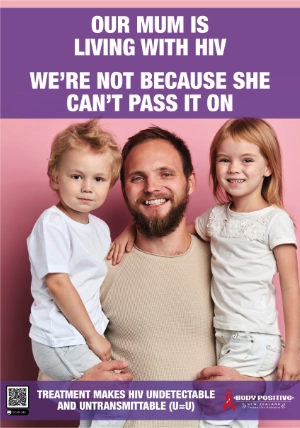

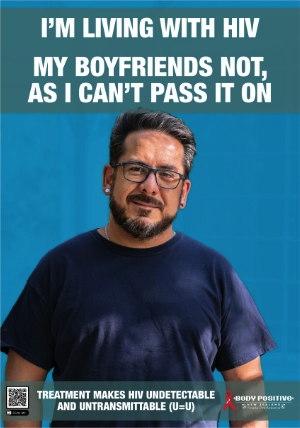
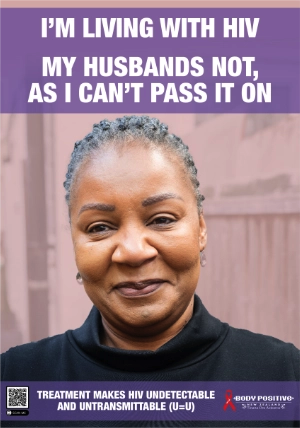
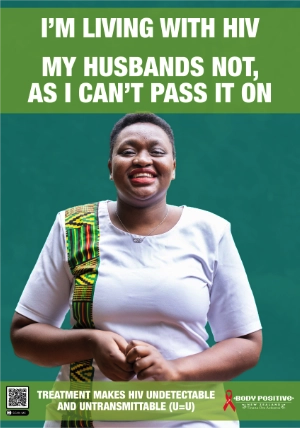
Can't Pass It On (leaflet)

Join Body Positive
By becoming a member you will be able to access all the services we offer, as well as support and updates to help you live better.
Newsletter
Want to be keep up with whats happening at Body Positive?
Subscribe to our newsletter below by submitting your e-mail address.
Subscribe to our newsletter below by submitting your e-mail address.

